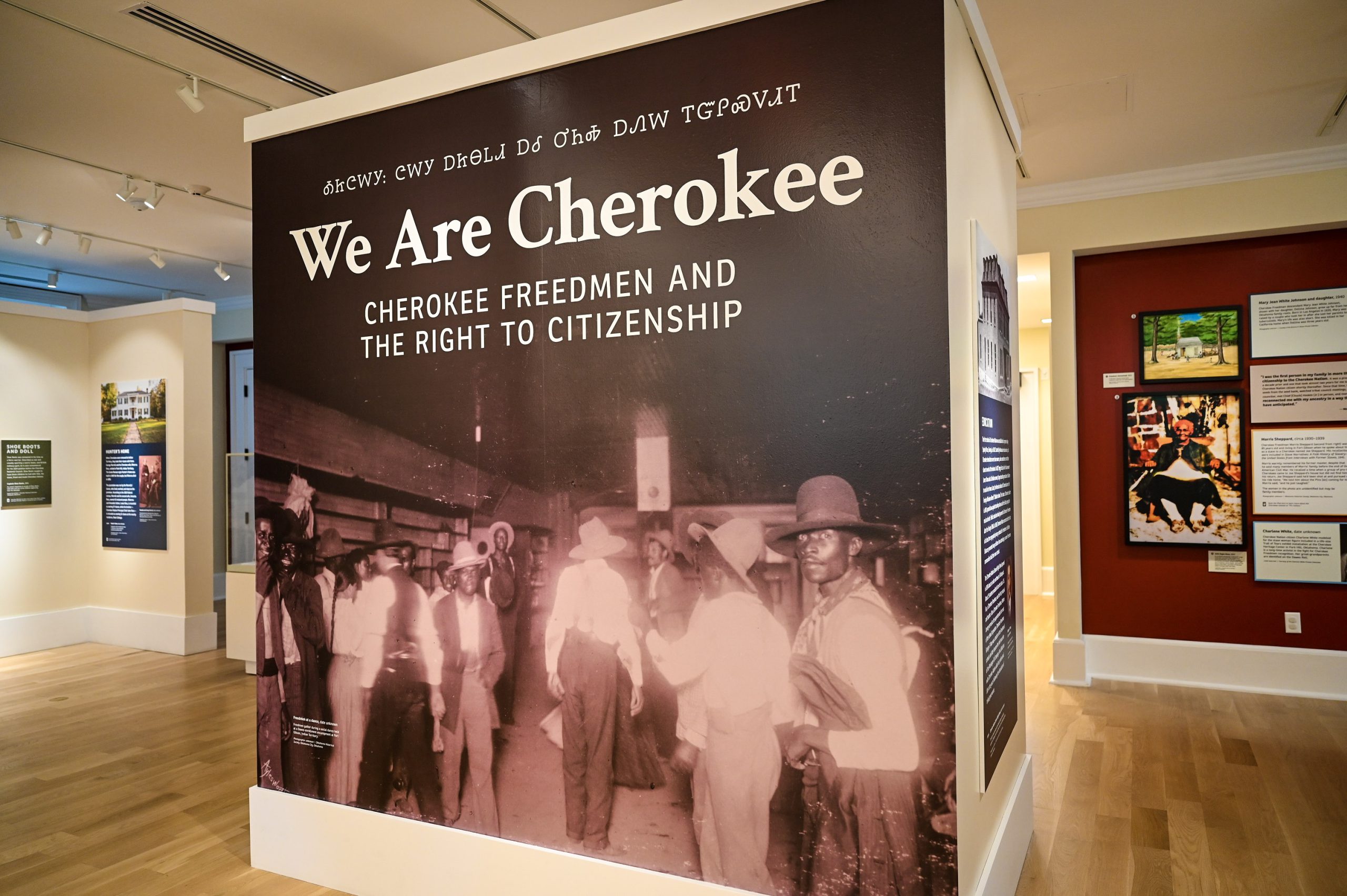Indianz.Com > News > Chuck Hoskin: Cherokee Nation lives up to treaty obligations to Freedmen
Cherokee Freedmen History and Art Exhibit Is an Educational Experience
Tuesday, September 6, 2022
Cherokee Nation
Cherokee history is full of rich moments and great triumphs. Throughout history, the Cherokee people have acted collectively to overcome tragedy, work through trauma, and build a great nation. Telling that story is important. But a great nation is strong enough to tell the whole story, including those times when we inflicted trauma on others.
For Cherokee Nation, what may be our darkest act is when we enslaved other human beings and then deprived them and their descendants of basic rights for over a century. Under our own laws, parts of our economy were built on the backs of enslaved people. We have to recognize that there were times when we imposed trauma on others; we have to acknowledge that we enslaved African-Americans under our own law. If we ignore or suppress that, we do to Freedmen and their descendants the same things that have been done to Cherokee people. Our story has been suppressed; our story has been denied. Any nation is a stronger nation if they tell their whole story: the tragedy, the triumph, and the chapters that are dark and difficult.
The Cherokee story has been suppressed and denied, but we persevered and now can tell that story again – the whole story. That’s why I am honored to announce the newest exhibit at the Cherokee National History Museum in downtown Tahlequah, “We Are Cherokee: Cherokee Freedmen and the Right to Citizenship.” This unique experience celebrates the deeply moving history of Cherokee Freedmen in family stories and images shared by their descendants, as well as original artwork inspired by the Freedmen experience.

Chuck Hoskin Jr.
is the 18th elected Principal Chief of the Cherokee Nation, the largest Indian
tribe in the United States. He is only the second elected Principal Chief of the
Cherokee Nation from Vinita, the first being Thomas Buffington, who served from
1899-1903. Prior to being elected Principal Chief, Hoskin served as the tribe’s
Secretary of State. He also formerly served as a member of the Council of the
Cherokee Nation, representing District 11 for six years.
Search
Filed Under
Tags
More Headlines
Arizona Mirror: Bipartisan bill provides $5.1 billion for tribal water settlement
Cronkite News: Navajo Code Talker blasts removal of content from U.S. military sites as ‘racist’
Native America Calling: Higher education for Native students at a crossroads
Press Release: Senate Committee on Indian Affairs announces Republican majority staff
MSU News: American Indian Council hosts 49th annual powwow
People’s World: Indigenous coalition celebrates release of Leonard Peltier
National Congress of American Indians ‘deeply concerned’ about removal of Native content from U.S. military sites
Montana Free Press: Indian lawmakers tout legislative successes
VIDEO: Secretary of the Interior Doug Burgum on Indian Education
Cronkite News: Navajo entrepreneurs find success thanks to business incubator
Native America Calling: Native Bookshelf with Marcie Rendon and Dennis Staples
Press Release: Spirit Lake Nation reclaims 680 acres in North Dakota
‘Demoralizing’: Lawsuit blasts Trump administration for firings at tribal colleges
NAFOA: 5 Things You Need to Know this Week (March 17, 2025)
Chuck Hoskin: Cherokee Nation makes housing a priority for our health
More Headlines
Cronkite News: Navajo Code Talker blasts removal of content from U.S. military sites as ‘racist’
Native America Calling: Higher education for Native students at a crossroads
Press Release: Senate Committee on Indian Affairs announces Republican majority staff
MSU News: American Indian Council hosts 49th annual powwow
People’s World: Indigenous coalition celebrates release of Leonard Peltier
National Congress of American Indians ‘deeply concerned’ about removal of Native content from U.S. military sites
Montana Free Press: Indian lawmakers tout legislative successes
VIDEO: Secretary of the Interior Doug Burgum on Indian Education
Cronkite News: Navajo entrepreneurs find success thanks to business incubator
Native America Calling: Native Bookshelf with Marcie Rendon and Dennis Staples
Press Release: Spirit Lake Nation reclaims 680 acres in North Dakota
‘Demoralizing’: Lawsuit blasts Trump administration for firings at tribal colleges
NAFOA: 5 Things You Need to Know this Week (March 17, 2025)
Chuck Hoskin: Cherokee Nation makes housing a priority for our health
More Headlines